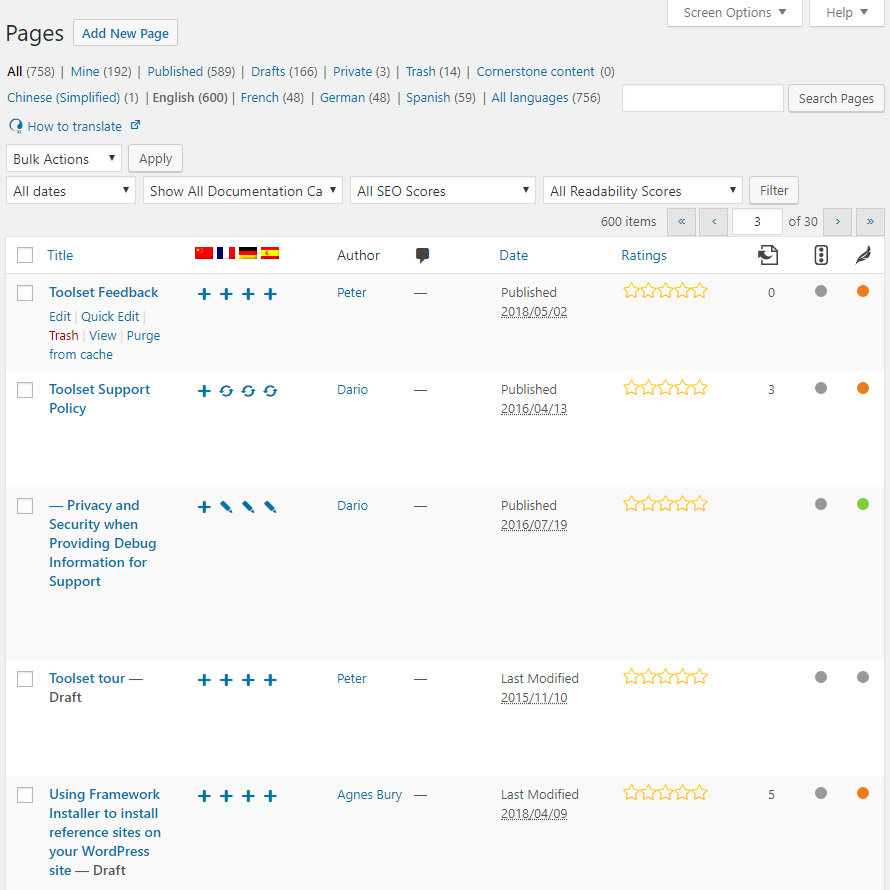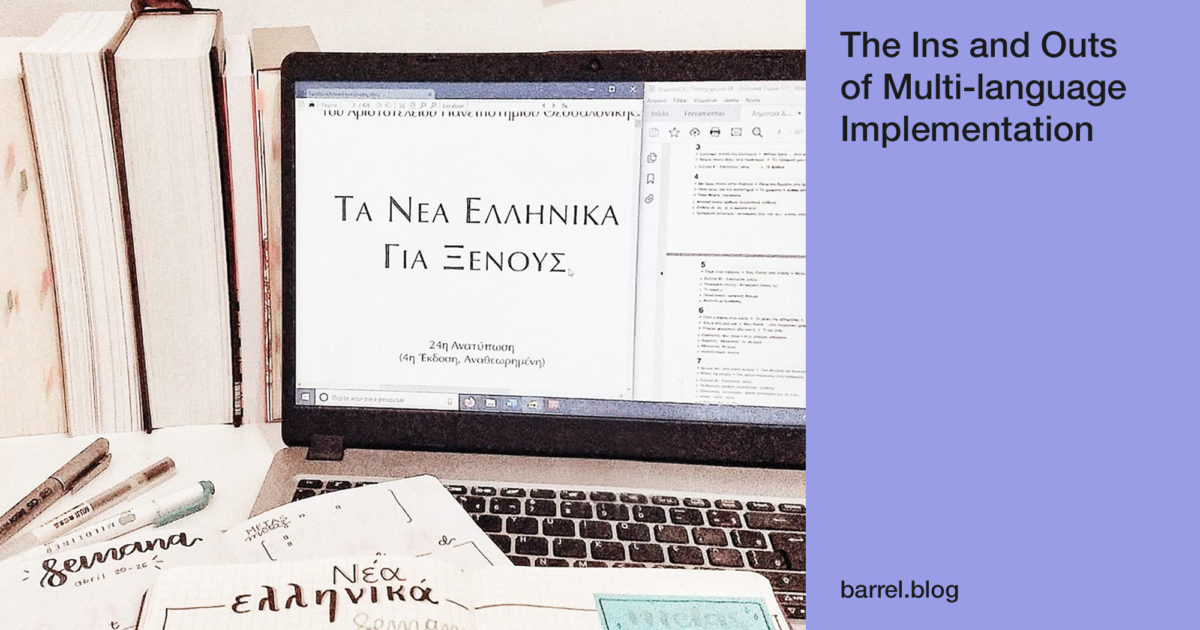In an increasingly globalized world of ecommerce, investing in multilingual pages only enhances the customer experience for your international consumers.
Multi-language functionality is essential if your site already sees traffic from multiple countries. It’s also something you’ll want to consider if you’re looking to increase your international visibility and sales.
Translated content is full of SEO-rich keywords that improve your site’s organic search rankings when global users search in their preferred languages. And global visitors who can easily read your website are more likely to convert.
Making your content available in new languages will attract new customers, grow your website traffic, and ultimately lead to a higher conversion rate.
But how can you translate your site copy into multiple languages?
There are two types of technical approaches for language translation. Which one you choose depends on your platform and design requirements:
- SaaS Solutions
- WordPress Plugins and Shopify Apps
SaaS solutions are easy to implement across many platforms. WordPress Plugins and Shopify Apps only work for their respective platforms.
In this post, we’ll highlight the pros and cons of these two solutions to language translation and take into account:
- The costs and effort associated with each one
- External factors like SEO opportunities
- Site design considerations
Who is translating the copy and when will it be ready?
Website copy can be manually translated by a human or it can be machine-translated automatically.
Both routes have benefits. But it’s important to know upfront who will be doing the translation work and how much content there is to translate. Not having website copy translated before you go into development can result in bugs or issues with content, because you can’t foresee how a language will affect content.
Most SaaS solutions, Shopify Apps, and WordPress Plugins offer both free AI translation and opportunities to connect with paid translation professionals.
While AI-driven machines excel at repetitive work and word-by-word or sentence-by-sentence translations, they frequently struggle with the linguistic and cultural nuances of localization.
Marketing copy is even harder for machines to get right. It needs a human to nail the right tone of voice or a specific geographic region’s cultural preferences.
This is where linguists and other language service professionals add value — a human touch makes machine translations sound more human and natural.
SaaS Solutions
SaaS solutions are the cleanest and easiest way to implement multi-language capabilities for most sites.
Once installed, the software will instantly detect your site content, translate it to the languages you select, and display it. This removes the need for code or any duplicate pages.
You can customize the text from there as needed.
SaaS Solution Pros:
Multi-language SaaS solutions tend to be simple to implement and don’t require costing out integration on a per-page basis.
The translation is done on the frontend via a request to the software platforms’ API. All text is then automatically translated, including hard-coded strings like CTAs.
Saas Solution Cons:
Design capabilities are limited with most SaaS solutions for multi-language translations, as content must be structured to best support automatically replacing it.
SaaS solutions also limit SEO opportunities. The translated copy is not actually hosted on-site. Therefore Google doesn’t index it.
You can solve this SEO challenge by having a unique subdomain or subdirectory for each language. This enables Google to consolidate the SEO values from both your english and international sites.
By creating subdomains you can also adjust each subdomain’s meta-data. This gives search engines valuable information, such as “the following link is an alternate version of another page,” or that it’s in a different language.
- Subdirectories: example.com/es, example.com/fr
- Subdomains: es.example.com, fr.example.com
Another benefit of subdomains is that you can use Google’s Webmaster Tools to geo-target your subdomains. This ensures the right users end up on the right page.
Check out Neil Patel’s article to learn more about the SEO considerations of multilingual sites.
The bad news is creating subdomains increases the complexity of your project. Creating a subdomain involves modifying a site’s Domain Name System, and you need an IT or development team for that.
But WordPress Plugins and Shopify Apps make SEO much easier when translating languages on a site.
SaaS Solutions – Top Providers
WeGlot and Localize are the top providers of software plugins where the translation is hosted off-site.

WordPress Plugins and Shopify Apps
Platform-specific plugins and apps are more time consuming to implement, but they offer a more nuanced approach to your translated content.
Unlike Saas solutions, apps and plugins don’t automatically detect all the copy on your site. You have to install the app, go into each piece of content, and “turn on” the translation options.
The process is less automated, but gives you a higher degree of control. This is best for sites with customized design and copy placement that changes by language or region.
For example, do you have region-specific accreditations that you’d like to highlight? Do you want to hide certain product customization options that aren’t available internationally?
If so, your site could benefit from the customized approach of a WordPress Plugin or Shopify App.
Shopify App and WordPress Plugin Pros
Both WordPress plugins and Shopify apps allow complete control over what is visualized in each language on each page of your website.
One caveat is that you may need to tweak your front end to reflect the difference in character layout if you are using non-latin character languages such as:
- Cyrillic languages e.g. Russian, Slavic languages
- Character-based languages e.g. Mandarin, Japanese
- Right to Left languages e.g. Arabic, Hebrew
Your translated pages are also always present and indexable because the translated copy is hosted on-site. This means you automatically improve your site’s rankings for international keywords, without worrying about setting up additional sub-domains.
Shopify App and WordPress Plugin Cons:
These solutions are more time-intensive to implement.
In addition to the installation process described above, there’s a manual process to translate any hardcoded strings. For example, a button will always say “Learn More” unless it is hard-coded with the alternative languages and requires logic for changing.
Shopify App and WordPress Plugins – Top Providers
PolyLang, WPML, and Translate Press are the top providers of WordPress Plugins for multi-language translations. Langify is the top Shopify app.

In Conclusion
There are lots of options and providers out there for translating your website copy.
SaaS solutions are best when you want to offer the same information in multiple languages and have access to a technical team that can create unique subdomains to leverage the SEO opportunities that come with your translated site.
WordPress Plugins and Shopify Apps are better for when you have a highly custom front-end experience, region-specific messaging, or are anticipating non-latin character language translation.
We partner with brands to improve the overall e-commerce experience for customers. Learn more about Barrel and the work we do for growing brands.
Featured image courtesy of Daniela Fernandez. Follow her on Instagram to share her passion for classical studies.
